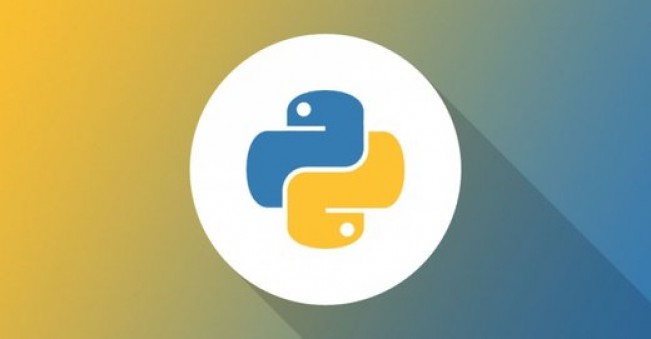| 引言
Python标准库为我们提供了threading和multiprocessing模块编写相应的多线程/多进程代码,但是当项目达到一定的规模,频繁创建/销毁进程或者线程是非常消耗资源的,这个时候我们就要编写自己的线程池/进程池,以空间换时间。但从Python3.2开始,标准库为我们提供了concurrent.futures模块,它提供了ThreadPoolExecutor和ProcessPoolExecutor两个类,实现了对threading和multiprocessing的进一步抽象,对编写线程池/进程池提供了直接的支持。

Executor和Future
concurrent.futures模块的基础是Exectuor,Executor是一个抽象类,它不能被直接使用。但是它提供的两个子类ThreadPoolExecutor和ProcessPoolExecutor却是非常有用,顾名思义两者分别被用来创建线程池和进程池的代码。我们可以将相应的tasks直接放入线程池/进程池,不需要维护Queue来操心死锁的问题,线程池/进程池会自动帮我们调度。
Future这个概念相信有java和nodejs下编程经验的朋友肯定不陌生了,你可以把它理解为一个在未来完成的操作,这是异步编程的基础,传统编程模式下比如我们操作queue.get的时候,在等待返回结果之前会产生阻塞,cpu不能让出来做其他事情,而Future的引入帮助我们在等待的这段时间可以完成其他的操作。关于在Python中进行异步IO可以阅读完本文之后参考我的Python并发编程之协程/异步IO。
p.s: 如果你依然在坚守Python2.x,请先安装futures模块。
使用submit来操作线程池/进程池
我们先通过下面这段代码来了解一下线程池的概念
# example1.py
from concurrent.futures import ThreadPoolExecutor
import time
def return_future_result(message):
time.sleep(2)
return message
pool = ThreadPoolExecutor(max_workers=2)
# 创建一个最大可容纳2个task的线程池
future1 = pool.submit(return_future_result, ("hello"))
# 往线程池里面加入一个task
future2 = pool.submit(return_future_result, ("world"))
# 往线程池里面加入一个task
print(future1.done()) # 判断task1是否结束
time.sleep(3)
print(future2.done()) # 判断task2是否结束
print(future1.result()) # 查看task1返回的结果
print(future2.result()) # 查看task2返回的结果 |
我们根据运行结果来分析一下。我们使用submit方法来往线程池中加入一个task,submit返回一个Future对象,对于Future对象可以简单地理解为一个在未来完成的操作。在第一个print语句中很明显因为time.sleep(2)的原因我们的future1没有完成,因为我们使用time.sleep(3)暂停了主线程,所以到第二个print语句的时候我们线程池里的任务都已经全部结束。
ziwenxie :: ~ ? python example1.py
False
True
hello
world
# 在上述程序执行的过程中,
通过ps命令我们可以看到三个线程同时在后台运行
ziwenxie :: ~ ? ps -eLf | grep python
ziwenxie 8361 7557 8361 3 3 19:45 pts/0 00:00:00 python example1.py
ziwenxie 8361 7557 8362 0 3 19:45 pts/0 00:00:00 python example1.py
ziwenxie 8361 7557 8363 0 3 19:45 pts/0 00:00:00 python example1.py |
上面的代码我们也可以改写为进程池形式,api和线程池如出一辙,我就不罗嗦了。
# example2.py
from concurrent.futures import ProcessPoolExecutor
import time
def return_future_result(message):
time.sleep(2)
return message
pool = ProcessPoolExecutor(max_workers=2)
future1 = pool.submit(return_future_result, ("hello"))
future2 = pool.submit(return_future_result, ("world"))
print(future1.done())
time.sleep(3)
print(future2.done())
print(future1.result())
print(future2.result()) |
下面是运行结果
ziwenxie :: ~ ? python example2.py
False
True
hello
world
ziwenxie :: ~ ? ps -eLf | grep python
ziwenxie 8560 7557 8560 3 3 19:53 pts/0 00:00:00 python example2.py
ziwenxie 8560 7557 8563 0 3 19:53 pts/0 00:00:00 python example2.py
ziwenxie 8560 7557 8564 0 3 19:53 pts/0 00:00:00 python example2.py
ziwenxie 8561 8560 8561 0 1 19:53 pts/0 00:00:00 python example2.py
ziwenxie 8562 8560 8562 0 1 19:53 pts/0 00:00:00 python example2.py |
使用map/wait来操作线程池/进程池
除了submit,Exectuor还为我们提供了map方法,和内建的map用法类似,下面我们通过两个例子来比较一下两者的区别。
使用submit操作回顾
# example3.py
import concurrent.futures
import urllib.request
URLS = ['http://httpbin.org', 'http://example.com/', 'https://api.github.com/']
def load_url(url, timeout):
with urllib.request.urlopen(url, timeouttimeout=timeout) as conn:
return conn.read()
# We can use a with statement to ensure threads are cleaned up promptly
with concurrent.futures.ThreadPoolExecutor(max_workers=3) as executor:
# Start the load operations and mark each future with its URL
future_to_url = {executor.submit(load_url, url, 60): url for url in URLS}
for future in concurrent.futures.as_completed(future_to_url):
url = future_to_url[future]
try:
data = future.result()
except Exception as exc:
print('%r generated an exception: %s' % (url, exc))
else:
print('%r page is %d bytes' % (url, len(data))) |
从运行结果可以看出,as_completed不是按照URLS列表元素的顺序返回的。
ziwenxie :: ~ ? python example3.py
'http://example.com/' page is 1270 byte
'https://api.github.com/' page is 2039 bytes
'http://httpbin.org' page is 12150 bytes |
使用map
# example4.py
import concurrent.futures
import urllib.request
URLS = ['http://httpbin.org', 'http://example.com/', 'https://api.github.com/']
def load_url(url):
with urllib.request.urlopen(url, timeout=60) as conn:
return conn.read()
# We can use a with statement to ensure threads are cleaned up promptly
with concurrent.futures.ThreadPoolExecutor(max_workers=3) as executor:
for url, data in zip(URLS, executor.map(load_url, URLS)):
print('%r page is %d bytes' % (url, len(data))) |
从运行结果可以看出,map是按照URLS列表元素的顺序返回的,并且写出的代码更加简洁直观,我们可以根据具体的需求任选一种。
ziwenxie :: ~ ? python example4.py
'http://httpbin.org' page is 12150 bytes
'http://example.com/' page is 1270 bytes
'https://api.github.com/' page is 2039 bytes |
第三种选择wait
wait方法接会返回一个tuple(元组),tuple中包含两个set(集合),一个是completed(已完成的)另外一个是uncompleted(未完成的)。使用wait方法的一个优势就是获得更大的自由度,它接收三个参数FIRST_COMPLETED,
FIRST_EXCEPTION 和ALL_COMPLETE,默认设置为ALL_COMPLETED。
我们通过下面这个例子来看一下三个参数的区别
from concurrent.futures import ThreadPoolExecutor, wait, as_completed
from time import sleep
from random import randint
def return_after_random_secs(num):
sleep(randint(1, 5))
return "Return of {}".format(num)
pool = ThreadPoolExecutor(5)
futures = []
for x in range(5):
futures.append(pool.submit(return_after_random_secs, x))
print(wait(futures))
# print(wait(futures, timeout=None, return_when='FIRST_COMPLETED'))! |
如果采用默认的ALL_COMPLETED,程序会阻塞直到线程池里面的所有任务都完成。
ziwenxie :: ~ ? python example5.py
DoneAndNotDoneFutures(done={
<Future at 0x7f0b06c9bc88 state=finished returned str>,
<Future at 0x7f0b06cbaa90 state=finished returned str>,
<Future at 0x7f0b06373898 state=finished returned str>,
<Future at 0x7f0b06352ba8 state=finished returned str>,
<Future at 0x7f0b06373b00 state=finished returned str>}, not_done=set()) |
如果采用FIRST_COMPLETED参数,程序并不会等到线程池里面所有的任务都完成。
ziwenxie :: ~ ? python example5.py
DoneAndNotDoneFutures(done={
<Future at 0x7f84109edb00 state=finished returned str>,
<Future at 0x7f840e2e9320 state=finished returned str>,
<Future at 0x7f840f25ccc0 state=finished returned str>},
not_done={<Future at 0x7f840e2e9ba8 state=running>,
<Future at 0x7f840e2e9940 state=running>}) |
思考题
写一个小程序对比multiprocessing.pool(ThreadPool)和ProcessPollExecutor(ThreadPoolExecutor)在执行效率上的差距,结合上面提到的Future思考为什么会造成这样的结果。 |